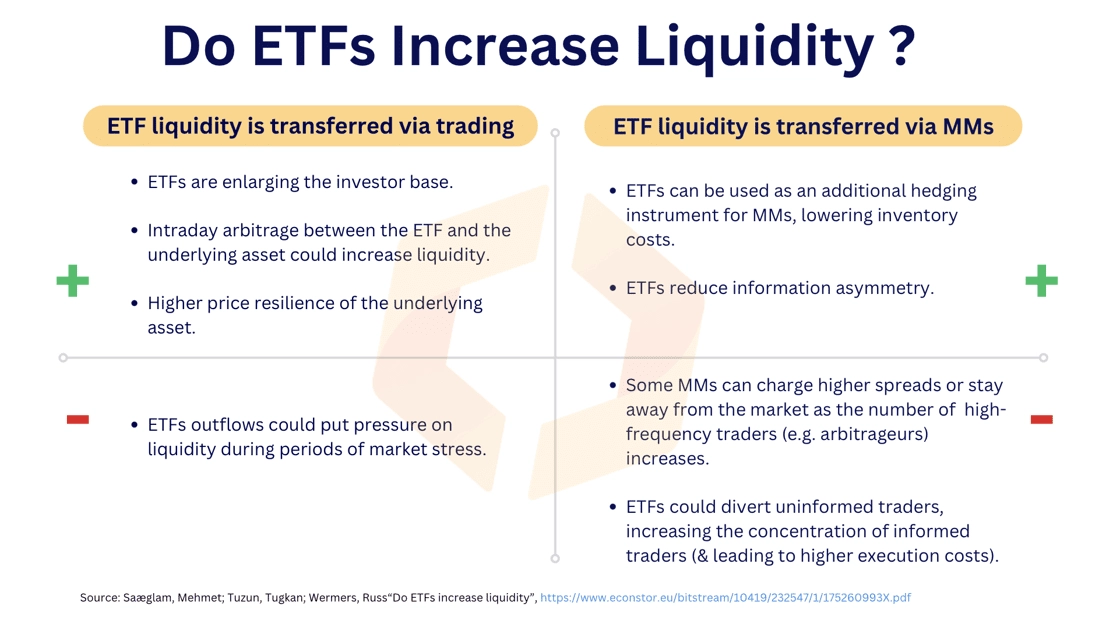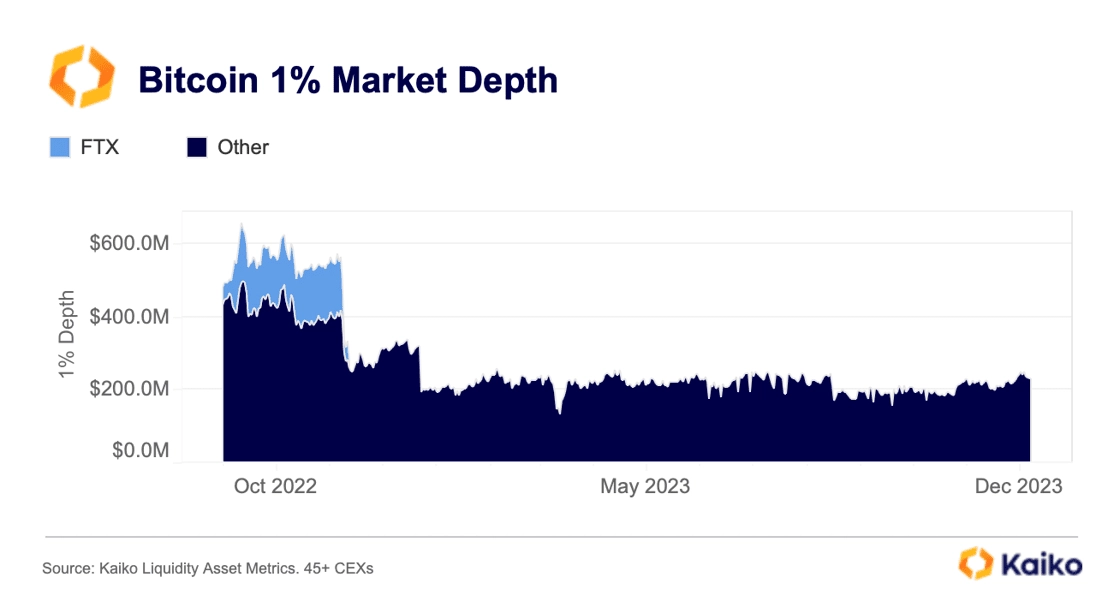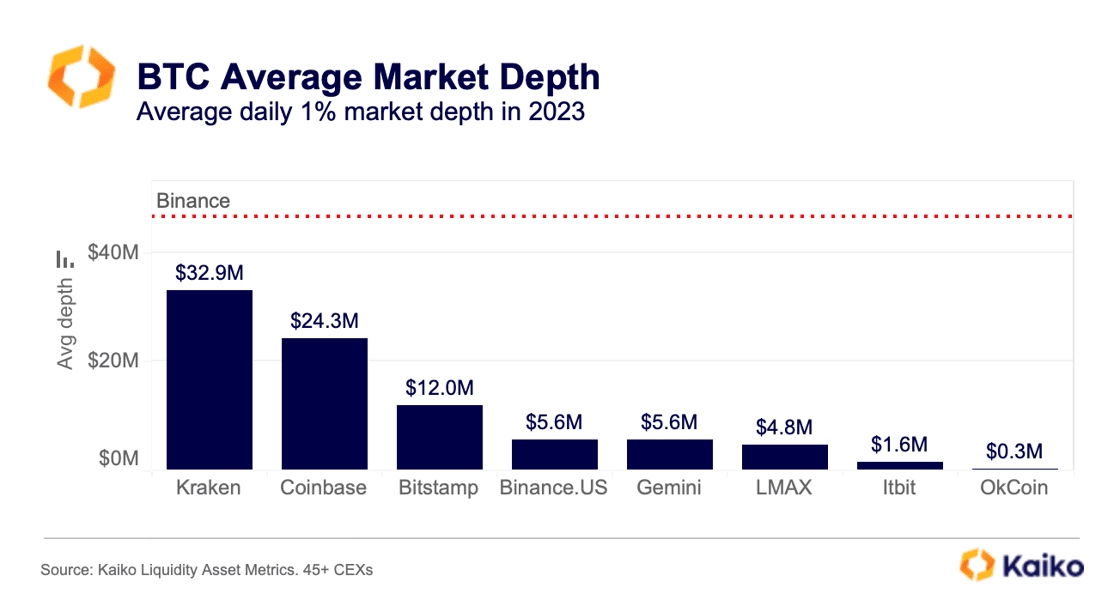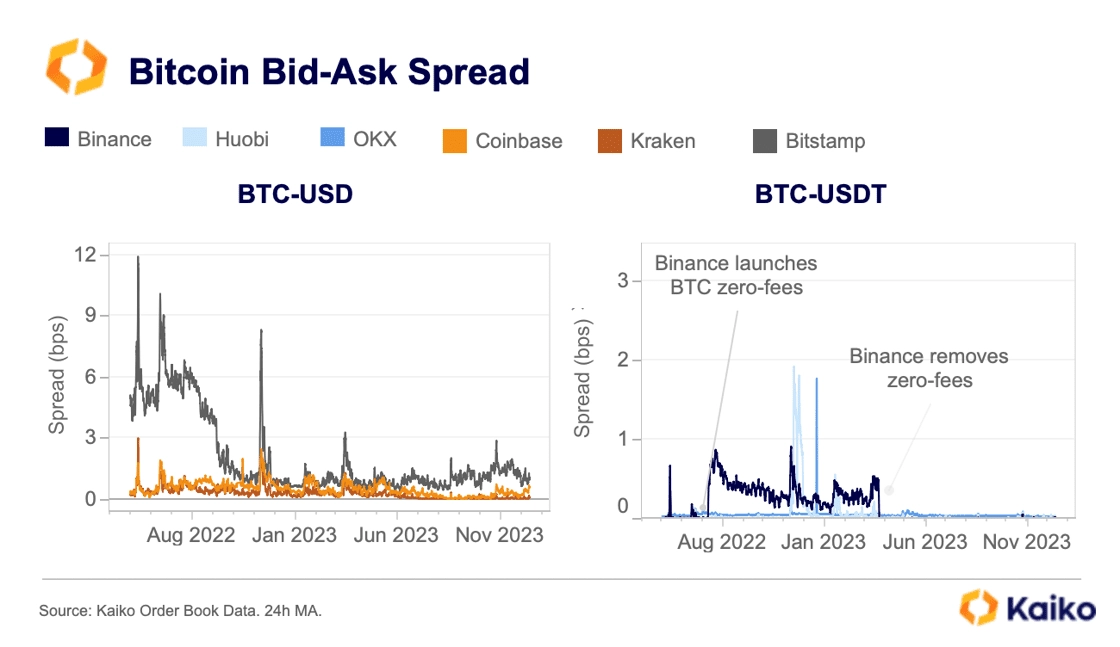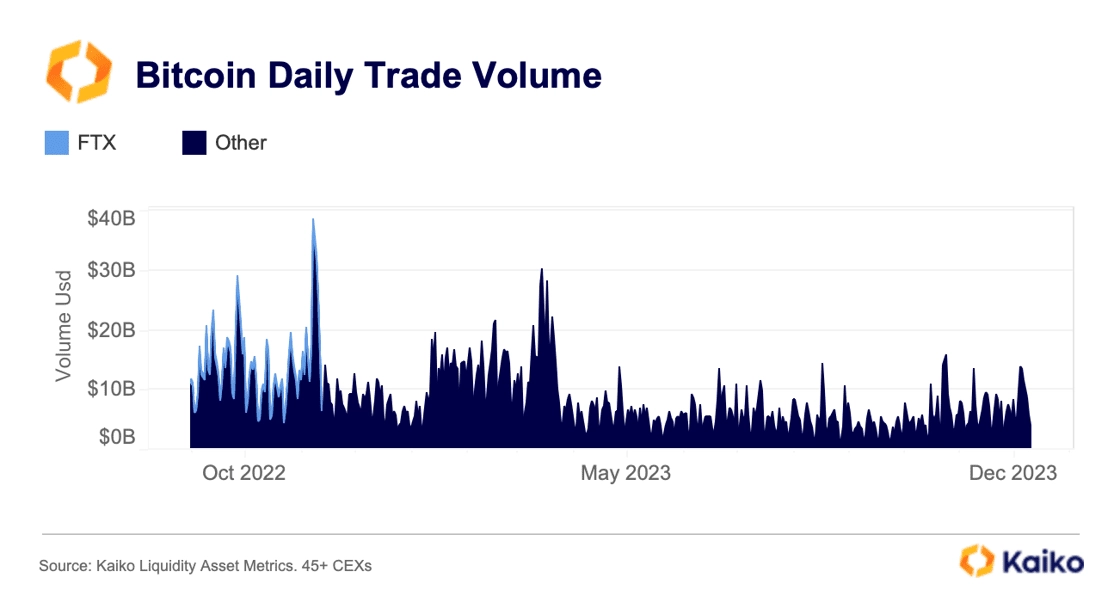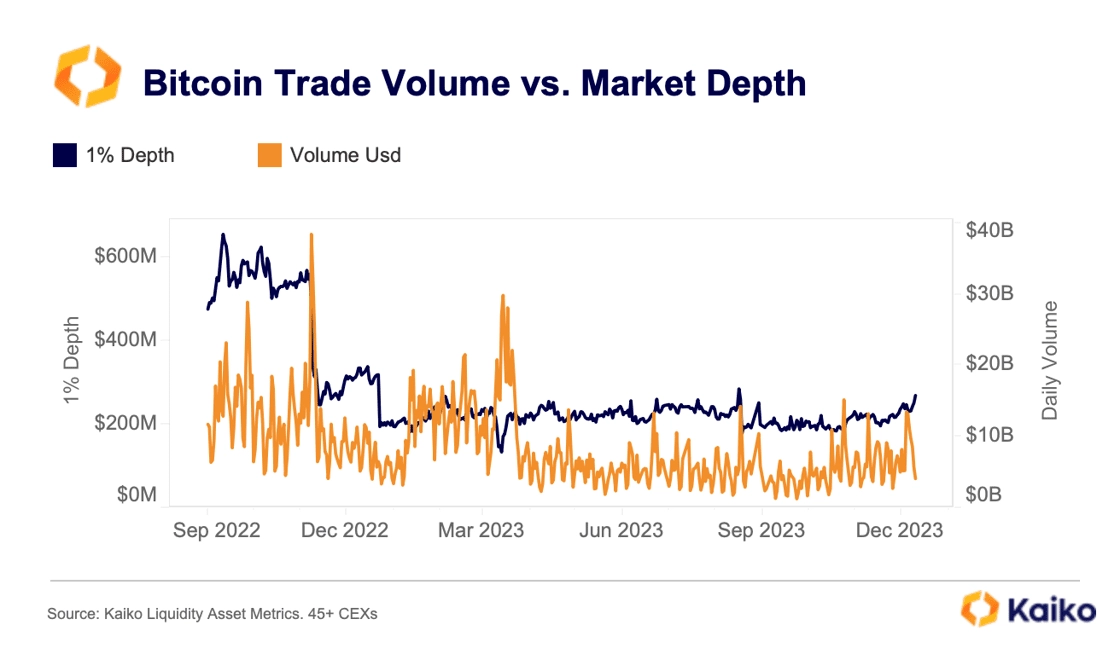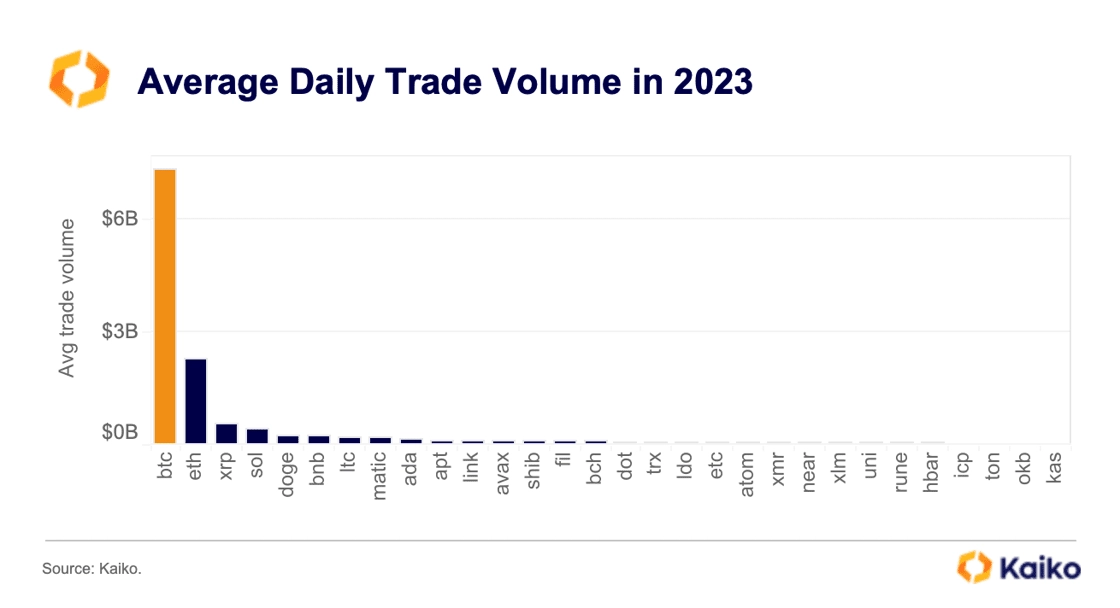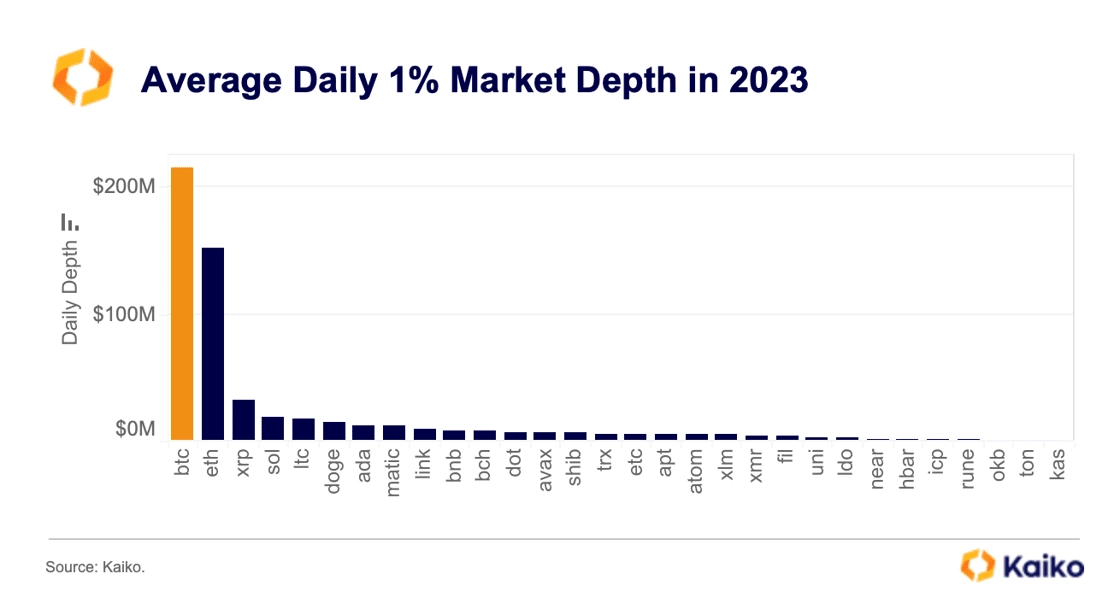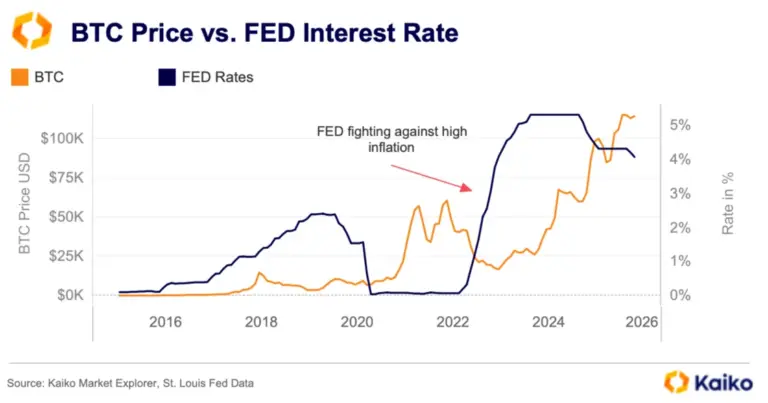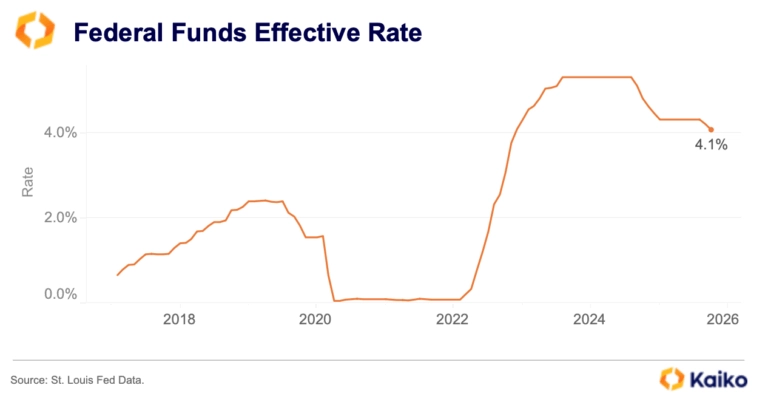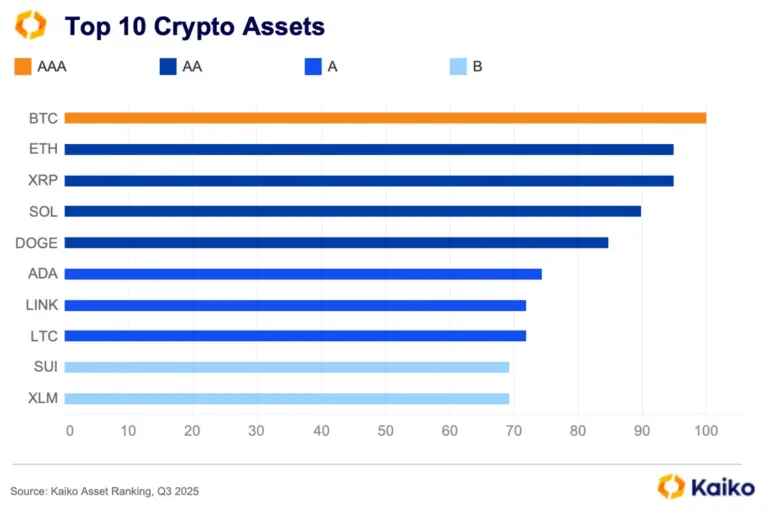Liquidity Flywheel Drives Binance to 300 Million Users

Will ETFs Boost Bitcoin’s Liquidity?
14/12/2023
Data Used In This Analysis

More From Kaiko Research
![]()
Macro
17/11/2025 Data Debrief
Navigating Fed Fears & AI Bubble BurstingGiven the current macroeconomic context, we are seeing the emergence of two major risks likely to have a decisive impact.
Written by Adam Morgan McCarthy![]()
Stablecoin
11/11/2025 Data Debrief
Stablecoins, the Beating Heart of Crypto MarketsThis week, we’re releasing our latest Asset Ranking. This time the scoring has developed beyond a simple liquidity ranking to encompass a broader range of metrics that truly measure the tradability of an asset. As well as looking at volume, liquidity and market capitalization the new ranking also considers market availability, maturity, and custody scores.
Written by Adam Morgan McCarthy![]()
Layer 1
04/11/2025 Data Debrief
Introducing the Kaiko Crypto Asset RankingThis week, we’re releasing our latest Asset Ranking. This time the scoring has developed beyond a simple liquidity ranking to encompass a broader range of metrics that truly measure the tradability of an asset. As well as looking at volume, liquidity and market capitalization the new ranking also considers market availability, maturity, and custody scores.
Written by Adam Morgan McCarthy![]()
Derivatives
28/10/2025 Data Debrief
Time to Rethink Crypto HedgingFollowing recent market shocks, we’re examining hedging practices in crypto markets. Perps dominate trading volume, dwarfing options, but is it time for regime change and could options be the answer? The October 10 crash reminded us how extreme crypto’s volatility can be, and how current hedging tools are limited due to the relatively small size of the market.
Written by Adam Morgan McCarthy



